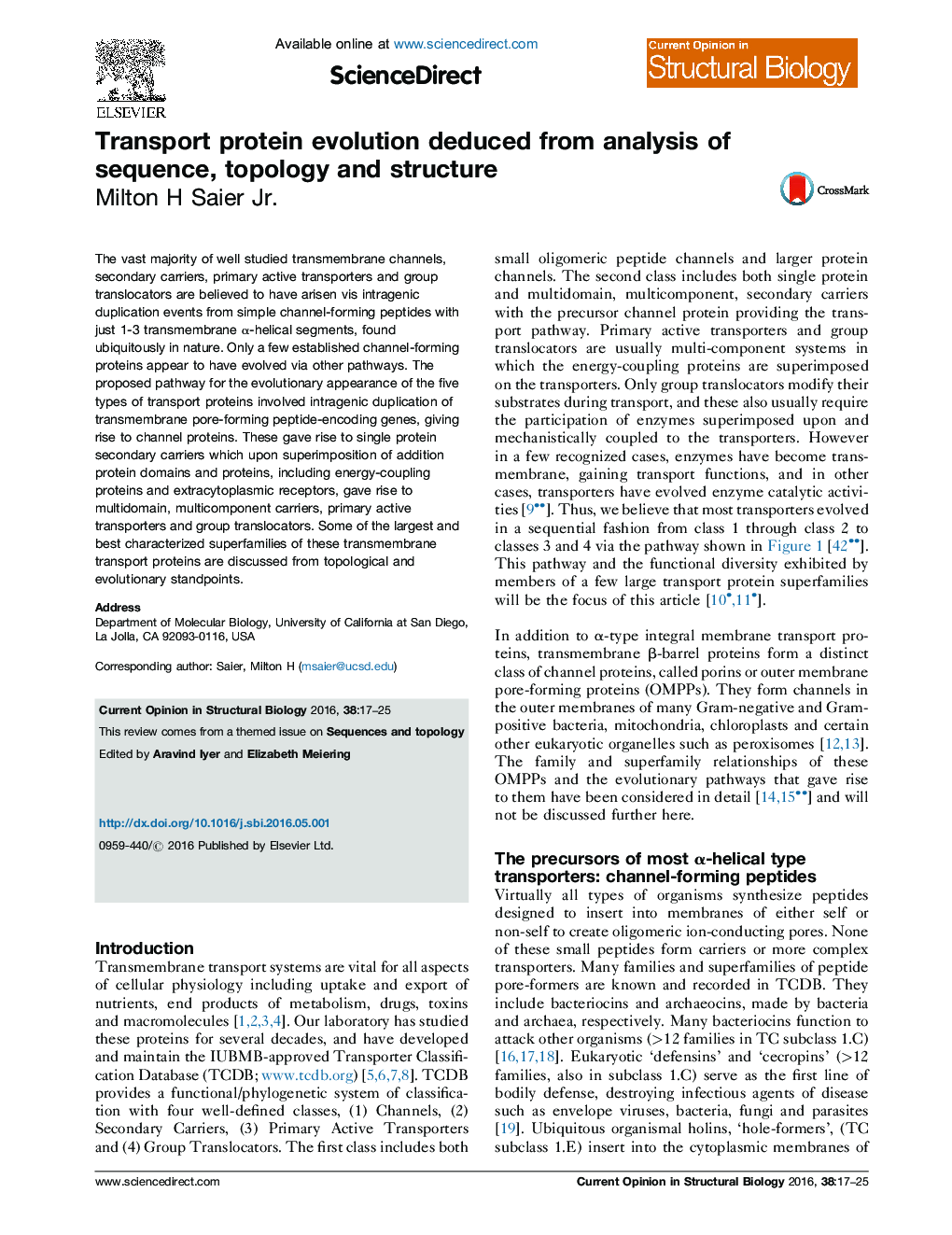| Article ID | Journal | Published Year | Pages | File Type |
|---|---|---|---|---|
| 8319683 | Current Opinion in Structural Biology | 2016 | 9 Pages |
Abstract
The vast majority of well studied transmembrane channels, secondary carriers, primary active transporters and group translocators are believed to have arisen vis intragenic duplication events from simple channel-forming peptides with just 1-3 transmembrane α-helical segments, found ubiquitously in nature. Only a few established channel-forming proteins appear to have evolved via other pathways. The proposed pathway for the evolutionary appearance of the five types of transport proteins involved intragenic duplication of transmembrane pore-forming peptide-encoding genes, giving rise to channel proteins. These gave rise to single protein secondary carriers which upon superimposition of addition protein domains and proteins, including energy-coupling proteins and extracytoplasmic receptors, gave rise to multidomain, multicomponent carriers, primary active transporters and group translocators. Some of the largest and best characterized superfamilies of these transmembrane transport proteins are discussed from topological and evolutionary standpoints.
Related Topics
Life Sciences
Biochemistry, Genetics and Molecular Biology
Biochemistry
Authors
Milton H Jr.,
